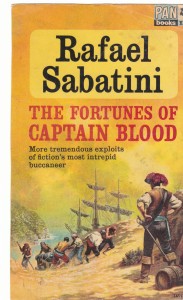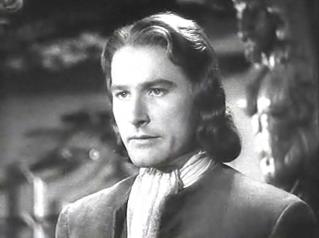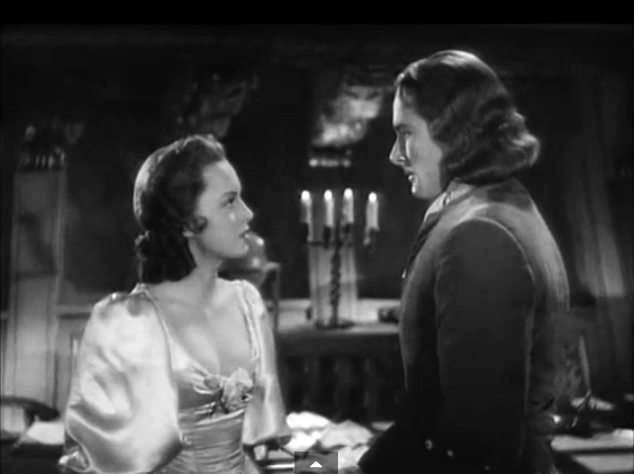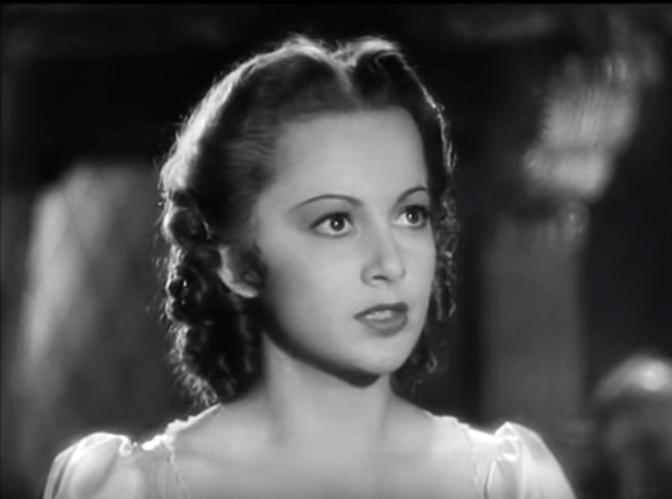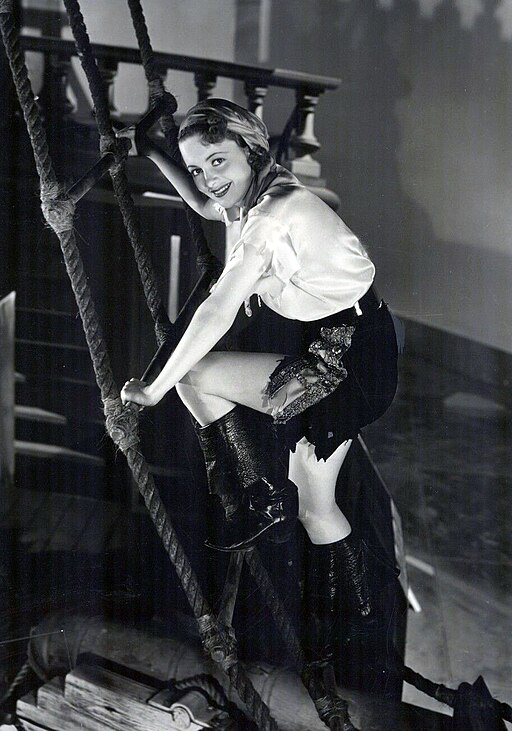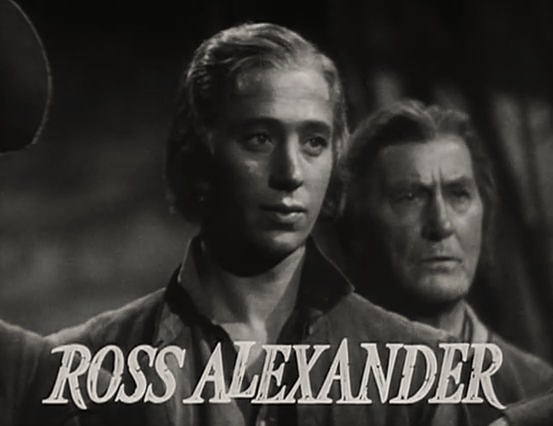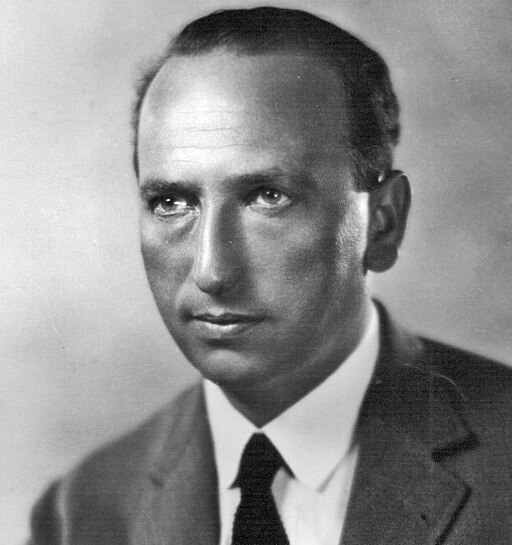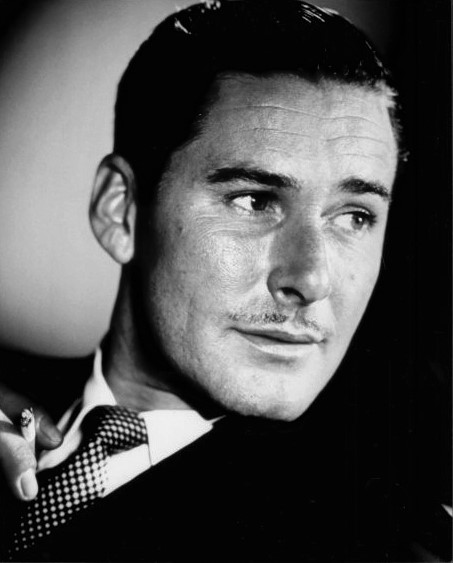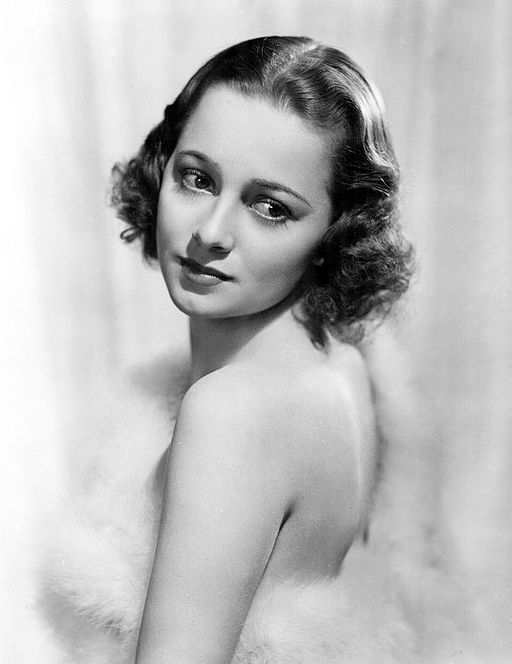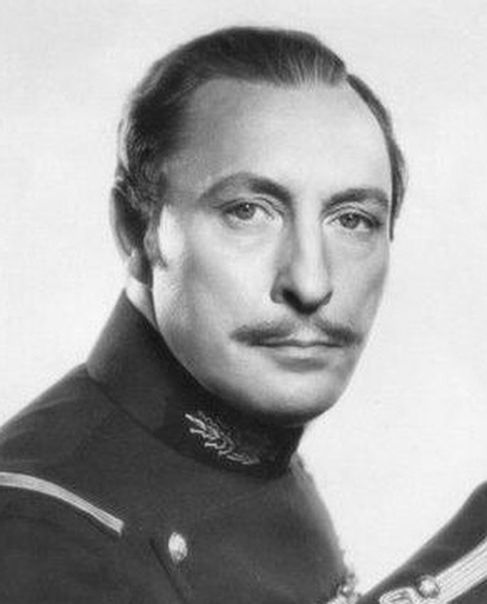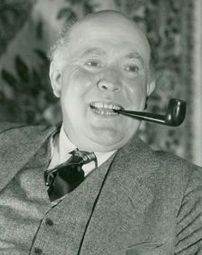Captain Blood - 1935
back| Released by | Warner Bros. |
| Director | Michael Curtiz |
| Producer | Hal B. Wallis |
| Script | Screenplay by Casey Robinson, based on the novel by Rafael Sabatini |
| Cinematography | Ernest Haller |
| Music by | Erich Wolfgang Korngold |
| Running time | 119 minutes |
| Film budget | $1 million |
| Box office sales | $1.75 million |
| Main cast | Errol Flynn - Olivia de Havilland - Lionel Atwill - Basil Rathbone |
Captain Blood
A Swashbuckling Gem
The movie's plot centers around Peter Blood, an English physician who is unjustly convicted of treason and sold into slavery in the Caribbean. There, he escapes and becomes a feared pirate captain.
His swashbuckling adventures, moral integrity, and romance with Arabella Bishop form the crux of the storyline. The film is noted for its action sequences, grand production values, and the chemistry between Flynn and de Havilland.
Related
Captain Blood – 1935
Summary and Analysis
"Captain Blood" opens in 17th-century England amidst the Monmouth Rebellion. Dr. Peter Blood, a wise and skilled physician, treats a wounded rebel in his hometown, which leads to his arrest under the accusation of treason. Despite his pleas of neutrality, Blood is sentenced to slavery rather than death, thanks to a sympathetic judge. He is then shipped off to Port Royal in Jamaica to be sold as a slave.
In Jamaica, Blood is purchased by Colonel Bishop and catches the eye of the Colonel's niece, Arabella Bishop. Despite her initial indifference, Arabella grows fond of Blood for his intelligence and character. Meanwhile, Blood's leadership qualities make him popular among other slaves.
An opportunity for escape presents itself when the Spanish attack Port Royal. Blood and his fellow slaves seize a Spanish ship, and with Blood as their captain, they become pirates of the Caribbean, feared and respected for their exploits. Despite his outlaw status, Blood retains his humane values, often avoiding unnecessary violence.
Blood's pirate fleet becomes a formidable force, but he remains haunted by thoughts of Arabella. Their paths cross again when Blood captures a French ship carrying Arabella. Old emotions rekindle, complicating Blood's feelings about his life as a pirate.
The climax arrives as Blood plans to attack Port Royal, now governed by Colonel Bishop, who has become more tyrannical. However, before Blood can enact his revenge, the English monarchy is restored in England, and Blood is offered a pardon and the position of Governor of Jamaica for his loyalty to the English throne. Blood accepts, seeing it as a chance to start anew and legitimize his feelings for Arabella. The film ends with Blood and Arabella embracing, looking forward to a life together under his new role.
Analysis
"Captain Blood" is a quintessential swashbuckler film that combines action, romance, and a bit of historical drama. Directed by Michael Curtiz, the film showcases early Hollywood's ability to blend grand set pieces and high-seas adventures with complex character development.
Errol Flynn's portrayal of Peter Blood is charismatic and vigorous, defining the archetypical cinematic pirate for decades to come. His transition from a physician to a pirate captain embodies themes of resilience and moral integrity, highlighting his unwavering ethical compass despite the corrupting influence of power and revenge.
Olivia de Havilland's Arabella is a strong, independent character who challenges Blood's worldview and decisions, adding depth to their romantic storyline. Their relationship evolves from initial disdain to deep affection, reflecting broader themes of redemption and personal growth.
The cinematography by Ernest Haller effectively captures the vastness of the sea and the claustrophobia of the slave conditions, contrasting freedom and captivity. Erich Wolfgang Korngold's score elevates the film's emotional weight and accentuates its adventurous spirit.
Ultimately, "Captain Blood" is both a tale of personal redemption and a critique of authoritarian injustice. It suggests that true leadership is compassionate and just, and it celebrates the human spirit's capacity to overcome tyranny and adversity. The film not only entertains but also invites reflections on power, freedom, and justice, securing its place as a landmark in the genre of adventure cinema.
Classic Trailer from Captain Blood:
Full Cast of Captain Blood:
- Errol Flynn as Dr. Peter Blood
- Olivia de Havilland as Arabella Bishop
- Lionel Atwill as Colonel Bishop
- Basil Rathbone as Captain Levasseur
- Ross Alexander as Jeremy Pitt
- Guy Kibbee as Hagthorpe
- Henry Stephenson as Lord Willoughby
- Robert Barrat as Wolverstone
- Hobart Cavanaugh as Dr. Bronson
- Donald Meek as Dr. Whacker
- Jessie Ralph as Mrs. Barlow
- Forrester Harvey as Honesty Nuttall
- Frank McGlynn Sr. as Rev. Ogle
- Holmes Herbert as Captain Gardner
- David Torrence as Andrew Baynes
Analysis of Michael Curtiz’ Directing Style:
Michael Curtiz's direction in "Captain Blood" exemplifies his renowned ability to manage expansive productions and his flair for visual storytelling, characteristics that would define much of his illustrious career in Hollywood. His directorial approach in the film showcases several key strengths: an adeptness with action sequences, a dynamic use of camera work, and a deft handling of narrative pacing, which together create a compelling cinematic experience.
Mastery of Action and Adventure Curtiz’s direction of the film's action sequences is both vigorous and elegant. His handling of the sea battles and sword fights, particularly the climactic duel between Peter Blood and Captain Levasseur, displays a choreographic precision that is visually thrilling. These sequences are not just mere spectacle; they are integral to the story, reflecting the high stakes and the personal growth of the characters. Curtiz's ability to weave these moments into the narrative arc without losing momentum is a testament to his skill as a director of action-packed dramas.
Dynamic Camera Work Curtiz employs a dynamic range of camera angles and movements to enhance the visual storytelling. His use of sweeping shots captures the grand scale of the ships and the ocean, which amplifies the sense of adventure. Close-ups are used effectively to convey the emotional intensity and internal conflicts of the characters, particularly in scenes involving Errol Flynn and Olivia de Havilland. This interplay between wide and tight shots helps maintain a visual interest and draws the audience deeper into the world of the film.
Pacing and Narrative Structure One of the hallmarks of Curtiz's direction is his attention to pacing. "Captain Blood" moves at a brisk pace, reflecting the urgency and peril of Blood’s journey from slavery to piracy and finally redemption. Curtiz manages the transitions between the high-energy action scenes and the more subdued, character-driven moments with a fluidity that ensures the film remains engaging throughout. This pacing not only entertains but also allows for character development, particularly highlighting Blood's evolution in a coherent and relatable manner.
Emotional and Dramatic Depth Curtiz is also adept at drawing out substantial performances from his actors, which is crucial in a film where character dynamics are pivotal. Under his direction, Flynn's portrayal of Peter Blood is both charismatic and layered, capturing a man torn between revenge and righteousness. Curtiz's ability to balance the romantic subplot with the overarching theme of freedom and justice adds a depth to the narrative, making the film more than just a typical adventure story.
In summary, Michael Curtiz’s direction in "Captain Blood" is a showcase of his versatility and his ability to marshal large-scale productions into cohesive, compelling narratives. His technical expertise and narrative sensibility make the film a standout in the adventure genre and a defining work in Curtiz's distinguished career.
Seminal Performance of Errol Flynn:
Errol Flynn's performance in "Captain Blood" is a seminal portrayal that not only defined his career but also set a new standard for the swashbuckling hero in cinema. Flynn's depiction of Dr. Peter Blood is characterized by a magnetic blend of charisma, vitality, and a nuanced emotional depth, elements that make his character both compelling and endearing to audiences.
Charisma and Screen Presence From his first appearance, Flynn captures the screen with an effortless charm that is intrinsic to his persona. His charismatic presence is pivotal in making the character of Peter Blood likable and heroic despite the character’s transition from a physician to a pirate. Flynn’s portrayal exudes a natural leadership quality that makes it believable that Blood could inspire loyalty among fellow slaves and lead them to take on a daring escape and subsequent pirate life.
Physicality and Action Prowess Flynn's athletic prowess is on full display in "Captain Blood." His handling of action sequences, particularly sword fighting, is both graceful and convincing. Flynn performs these sequences with a precision and flair that make the action scenes thrilling and visually spectacular. This physicality not only enhances the believability of his role as a swashbuckling pirate but also adds a dynamic layer to his performance, showcasing his ability to handle demanding physical feats alongside his acting.
Emotional Depth Beyond the charismatic rogue, Flynn brings a depth to Peter Blood that is essential for the character’s complexity. His interactions with Olivia de Havilland's Arabella Bishop are imbued with a subtle range of emotions, from playful banter to intense confrontation, revealing layers of vulnerability, passion, and moral integrity. Flynn’s ability to convey Blood’s internal conflict—between his desire for freedom, his yearning for love, and his quest for justice—adds a psychological depth to the adventure narrative, making his character not just a hero but a relatable human being with desires and dilemmas.
Chemistry with Co-stars Flynn's chemistry with his co-stars, especially Olivia de Havilland, is another highlight of his performance. Their on-screen relationship is charged with an electric dynamic that is both romantic and intellectually engaging. This chemistry is crucial in building a believable romantic subplot that supports, rather than detracts from, the main narrative of rebellion and redemption.
In "Captain Blood," Errol Flynn delivers a performance that is both iconic and transformative. His portrayal not only solidified his status as a leading man in Hollywood but also created a template for the adventurous, morally complex hero that would influence the genre for decades. Flynn's ability to meld charisma, physicality, and depth makes his performance in "Captain Blood" a defining moment in film history.
Notable Quotes from “Captain Blood”:
- Peter Blood: "I'm not a fool, so I know better than to expect any gallantry from you. But you might have the decency to spare me your gloating."
- Arabella Bishop: "I've no love for you, I'll confess, but I'll not have you hanged for what you did this night. I've done what I can for you. I hope you can escape."
- Peter Blood: "Nutts! All England's a-welter like this. King and Parliament, Whig and Tory, all trying to fry a fish in the other fellow's blood."
- Peter Blood: "A gentleman is one who never inflicts pain on another, nor lets another inflict pain on him."
- Peter Blood: "It's a truly royal clemency we're granted, my friends. One well worthy of King James. He spares us the gallows... and gives us the slavery."
- Peter Blood: "D'ye think I'd hang a man like Levasseur and not hang you if you disobeyed my orders?"
- Arabella Bishop: "It's entirely innocent I am, by a trick of fate. You've no right to hold me."
- Colonel Bishop: "You take a high tone for a slave, my man."
Awards and Recognition:
"Captain Blood" was well-received both critically and commercially upon its release in 1935, and it garnered several prestigious award nominations. Here's an overview of its major awards and nominations:
- Academy Awards (1936)
- Nominated for Best Picture
- Nominated for Best Director (Michael Curtiz)
- Nominated for Best Writing, Screenplay (Casey Robinson)
- Nominated for Best Sound Recording (Nathan Levinson)
- Nominated for Best Film Editing (George Amy)
- Nominated for Best Original Score (Erich Wolfgang Korngold, although credited to Leo F. Forbstein)
Although "Captain Blood" did not win any Oscars, the multiple nominations highlighted the film's quality across various aspects of production, from direction and screenplay to technical achievements in sound and editing. The film helped to establish Errol Flynn as a leading star and was instrumental in enhancing Michael Curtiz's reputation as a versatile and skilled director.
Classic Scenes from “Captain Blood”:
- The Trial of Peter Blood: This early scene sets the tone for the entire film. Peter Blood, played by Errol Flynn, is accused of treason for treating a wounded rebel. His defense and the interplay with the judges showcase his intelligence, wit, and the strong moral fiber that defines his character throughout the movie. It's a critical scene that establishes the injustice that propels Blood's subsequent journey.
- The Escape from Port Royal: After the Spanish attack Port Royal, Peter Blood and his fellow slaves seize this chaotic opportunity to escape. They bravely take over a Spanish ship, in a sequence filled with excitement and action. This pivotal scene is not only thrilling but also marks the transformation of Blood from a slave to a pirate captain, setting the stage for his new life on the high seas.
- The Duel Between Blood and Levasseur: One of the most gripping scenes in the film is the duel between Peter Blood and the pirate Captain Levasseur, played by Basil Rathbone. This sword fight is expertly choreographed and shot, showcasing Flynn's athleticism and the dramatic tension between the characters. The duel is also significant for its moral undertones, as it arises from Blood’s defense of an honorable code against Levasseur’s villainy.
- Blood's Capture of Arabella: When Captain Blood captures the ship carrying Arabella (Olivia de Havilland) and Lord Willoughby, it leads to a series of dramatic and romantic exchanges between Blood and Arabella. Their complex relationship, filled with both tension and affection, is beautifully explored in these scenes. Arabella's capture shifts the narrative to focus more on the romantic subplot, adding depth to both characters.
- Blood Becoming Governor: The climax of the film, where Peter Blood is offered a commission as the governor of Jamaica, comes with a twist of fate. The scene where he learns of his appointment is dramatically satisfying, as it resolves his status as an outlaw and legitimates his relationship with Arabella. It’s a fulfilling conclusion that aligns with the themes of justice and redemption.

